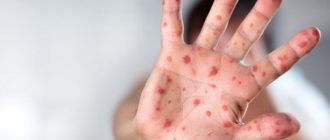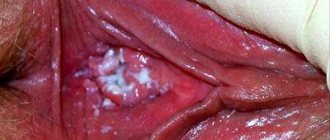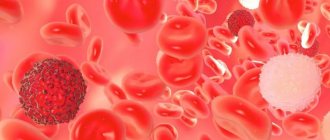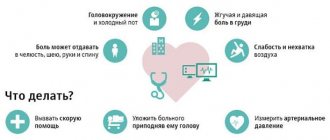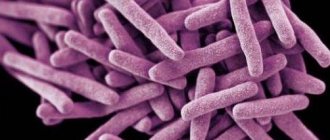The infectious disease chicken pox occurs at almost any age, however, this type of disease affects a person once in a lifetime, after which immunity is developed that fights the infection. Not all parents may know what chickenpox looks like in a child, and it is often confused with other similar diseases.
The disease tends to occur with complications in adulthood and is transmitted by airborne droplets. In order to become infected, it is enough to be in the same place with an infected person.
This type of disease can appear after a certain time, and when examining a child, you can visually observe the appearance of symptoms on the skin. Children most often at risk are those who attend preschool educational institutions and have constant contact with other children.
Experts in the medical field say that it is recommended to endure this type of disease in childhood, since the child’s body copes with the virus more quickly and very rarely causes complications.
Causes of chickenpox in children
Chickenpox is transmitted through the spread of a virus in the air that is inhaled by a child, most often at the stage when the immune system is most weakened and manifests itself in the form of symptoms.
You can become infected with chickenpox in public places, as well as in case of hypothermia and a decrease in the protective functions of the immune system.
Most often, chickenpox infection occurs in spring and autumn. Cases of infection with the disease are practically not observed in the summer.
You can get chickenpox in the following situations:
- While visiting public places where there is a carrier of the virus;
- When eating unwashed foods;
- When talking to a person who is a carrier;
- During pregnancy, through the placenta from mother to fetus.
Chickenpox tends to move through the air when the wind blows, so it can settle on clothing and be an active pathogen for some time. However, the chickenpox virus dies quickly and does not affect human health.
How can you get infected?
The microorganism that causes chickenpox belongs to the group of herpes pathogens type 3 and, transmitted by airborne droplets, is quickly carried by air currents from one room to another. He is able to penetrate into the room even through ventilation shafts.
The virus enters the respiratory tract of a healthy person from a sick person when talking, coughing, laughing, or sneezing. It quickly dies outside the human body, so chickenpox is not transmitted through household objects.
The microorganism that causes chickenpox is transmitted by airborne droplets and is quickly carried by air flow from one room to another. He is able to penetrate into the room even through ventilation shafts.
Incubation period and infectiousness of chickenpox in children
If the virus has infected a child, the disease may appear only after one to two weeks; before that, the child tends to infect others. When the body is damaged, the virus tends to linger on the human mucous membranes and actively multiply.
After the chickenpox virus infection multiplies to the required amount to attack the immune system, the first symptoms of chickenpox begin to appear, until this moment the child does not feel any signs of the disease and leads an active lifestyle.
Why and how much to smear with brilliant green
According to most doctors, brilliant green does not have the wonderful property of curing chickenpox that our grandparents talk about. It is a myth. The drug does not remove the rash or relieve itching. But using it is very useful for others, and not for the infected person himself. Let's explain why.
A child with chickenpox is contagious. And it remains so for another five days after the last wave of skin rashes. Then he can calmly communicate with peers, relatives, goes for a walk, and will no longer be in quarantine.
How can you understand which blisters appeared yesterday and which today, whether there are still a few new pimples in the morning or whether the contagious period has already ended? The answer is simple, with brilliant green.
Medically stained papules are considered old. If there is nothing else to treat on the body, then we wait five days and understand that the child has recovered. You can use any colored marker in the same way, although this is not necessary. It is much safer to use brilliant green.
Immunity to chickenpox and re-infection
After the chickenpox virus infects a child, a natural protective immunity is developed that prevents re-infection.
A child who has had chickenpox has the ability to prevent the virus from multiplying, as a result of which, after viral bacteria enter the mucous membrane, they die.
However, there are cases when, due to a decrease in the protective functions of the immune system, re-infection occurs. In such cases, the disease tends to be mild and not cause a lot of discomfort.
However, the child must be in quarantine to prevent infection of others.
The first signs of the disease
Within a few days after the onset of the disease, it is almost impossible to determine the presence of the disease.
A child may exhibit the following initial signs of chickenpox:
- Cough and nasal discharge;
- The presence of a slight temperature, which tends to independently decrease and increase after a certain time;
- The appearance of general weakness and apathy towards various games;
- Lack of appetite;
- Restless sleep.
Most often, the first visual manifestations appear in the face, hairline, and upper torso. Most often, the first symptoms appear in the form of small pink spots, which later develop into blisters with liquid inside.
The spots may be accompanied by slight itching, causing the child to become restless and restless.
Photo of the development of chickenpox
Types and symptoms of chickenpox in children
Chickenpox disease can occur in various forms, which determine the intensity of the symptoms of the disease.
The following types of chickenpox are distinguished:
- Typical;
- Atypical.
In turn, typical chickenpox is divided into the following forms.
Mild form of chickenpox
Most often, it practically does not cause complications and does not bring discomfort to the child. Most often, this form of the disease manifests itself in a child with a rash in the cheeks, abdomen and back; the appearance of red spots on the skin does not develop into the formation of blisters, due to which there is no constant itching.
Manifested by the following symptoms:
- a slight increase in temperature, most often at night;
- duration of the disease from 3 to 6 days;
- the child's skin rash is minor;
- cough.
Moderate form of chickenpox
Manifested by the appearance of large numbers of rashes. The rash most often appears on the body in the back and abdomen, as well as on the inner thighs. The red spots very quickly turn into blisters that are itchy and contain a cloudy fluid.
Accompanied by the following symptoms in the child:
- cough;
- itching;
- temperature up to 38 degrees;
- lack of appetite;
- headache;
- the child becomes more restless;
- no desire to play;
Severe chickenpox
It is the most severe and appears most often in older children. With this form of viral disease, a rash can be found throughout the body, as well as on the mucous membranes.
Most often, blisters cover the entire body and can be of various sizes. This type of illness lasts more than 14 days and requires long-term treatment.
The following symptoms of the disease can be observed:
- rash all over the body and on mucous membranes;
- vomit;
- headache;
- heat;
- fever;
- rave;
Atypical chicken pox can take the following forms:
- Rudimentary - appears most often in infancy and may have the following symptoms: low body temperature;
- a small amount of rash on the child’s body, which goes away on its own after a few days;
Atypical chickenpox is rarely observed, however, if it occurs, it requires urgent intervention from specialists.
Photos of forms of chickenpox in children:
Mild form of chickenpox
Moderate form of chickenpox
Severe chickenpox
Chickenpox on mucous membranes
Where and where does the rash come from first: the onset of the disease
Chickenpox appears on the body in waves. The rash can appear on any part of the body. More often found on the face, scalp, and back. Less commonly noted - on the stomach, chest, shoulders, hips. As a rule, there is no rash on the palms and soles.
With mild to moderate severity, the rash is localized mainly on the back, upper and lower extremities, and on the face. In severe cases of chickenpox, papules can be on the mucous membranes: on the genitals or in the mouth, on the tongue.
Many parents miss the fact that pockmarks can also be found in the scalp and forget to treat them. The child experiences great discomfort, and the onset of chickenpox quickly spreads over the scalp.
The chickenpox rash changes every day. The photo shows what the rash looks like at the beginning of the disease, on days 7 - 8, and at the end of chickenpox - on day 15.
My 2-year-old son contracted chickenpox from his older son. Snot, fever, then a small red rash appeared. After just a few hours, the pimples began to turn into small bubbles. Papules were on the back, on the chest, on the head; quite a bit on the arms and legs. The temperature remained for 2 days at 37.5 - 37.6, then dropped to 36.8 - 36.9.
How to distinguish chickenpox from other diseases in children
In children, most diseases tend to manifest themselves in the form of a rash on the skin, so it is very important to know how to correctly distinguish chickenpox from another type of disease.
The following factors are present in chickenpox:
- The rash spreads throughout the body very quickly;
- The appearance of a rash on the skin may occur in waves;
- Very often, new blisters may form in place of old blisters;
- A chickenpox rash appears in the face and scalp, only then spreading throughout the body;
- Chickenpox manifests itself in the form of spots that quickly turn into blisters and ulcers;
- With other types of skin diseases, the rash most often does not change its shape and appearance.
In order to identify the disease at an early stage, it is necessary to consult a pediatrician who will make a diagnosis and prescribe the correct treatment method for chickenpox depending on the type.
To walk or not to walk?
This is another question in caring for a child with chickenpox that worries parents: is it possible to walk with a baby with chickenpox?
During the period when the child is contagious, walks are not recommended. But if the parents are sure that the baby will not have contact with anyone (for example, if you live in a private house), then you can go for a short walk.
We list the important conditions for walking:
- Body temperature should return to normal.
- The last rash was 7 days ago. Otherwise, if you do go for a walk, there should be no other people on the street, especially children or pregnant women.
- If a child has recently had chickenpox, he should not sunbathe or swim in open water.
- The immune system of a child who has recovered from the disease is still weakened, so he is not recommended to have contact with sick children or unwell adults.
How long does chickenpox last?
Chickenpox most often develops in four stages:
- The incubation period is the moment the virus enters the body and spreads;
- Prodromal period - most often proceeds unnoticed, a slight increase in the child’s temperature may be observed;
- The period of appearance of the rash - most often lasts for 5-6 days, during this period the child’s body is covered with a large amount of rash;
- The recovery period is a reduction in the symptoms of the disease, elimination of ulcers that become crusty.
The manifestation of a skin rash in children as a result of chickenpox infection occurs as follows:
- Formation of red spots of a flat type;
- The appearance of papules in place of red spots;
- The appearance of blisters containing liquid inside, which gradually becomes cloudy;
- After the fluid in the blisters becomes cloudy, they burst and turn into ulcers.
The duration of the formation and appearance of new blisters on the body can last for 10 days. After this time has passed, the pimples begin to dry out and crust over. On average, the disease lasts 14–21 days. Depending on the severity of symptoms and the form of chickenpox damage to the child’s body.
Epidemiology of chickenpox
- Chickenpox is an extremely common disease. Susceptibility to it reaches 100%. Chickenpox patients are the only sources of infection.
- Patients become infectious from the end of the incubation period until the rash appears and until the end of the next 5 days after the last element rashes.
- Viruses are released in large quantities during coughing, sneezing and talking. Chickenpox is dangerous for the fetus if a pregnant woman has it.
- Children 1 to 10 years old are especially susceptible to infection. The maximum number of cases occurs between the ages of 3 and 4 years.
Rice. 3. Chickenpox is a highly contagious disease, the susceptibility to which reaches 100%.
Features of the course of chickenpox
The course of chickenpox in children may vary depending on age and the nature of the disease.
In children under 1 year
Most often at this age the disease is mild.
Children under 5 months do not get chickenpox, since at this age maternal immunity is still present, which fights viral infections.
A child from 5 months to 1 year experiences minor discomfort.
Most often, there is a slight increase in body temperature and a small amount of rash.
This type of chickenpox lasts no more than 6-7 days. After which all symptoms disappear on their own.
In children from 1 year to 3 years
At this age, the disease can occur with various symptoms, which, depending on the complexity of the disease, can be mild or severe.
Most often at this age the disease is easily tolerated.
Body temperature does not rise above 38 degrees.
There may be a large amount of rash that spreads throughout the body, however, the largest amount is in the thighs and abdomen.
The disease at this age is easily treatable and most often lasts no more than 14 days.
From three years
A child over 3 years of age is much more difficult to tolerate the disease.
Very often you can observe a high temperature, which is practically impossible to knock down.
The child has a large number of rashes throughout the body, including the mucous membranes.
During illness, the child must be provided with bed rest and proper treatment.
At this age, children very often scratch their pimples, as a result of which a large number of ulcers do not form, which gives the child additional unpleasant sensations of itching and pain on the skin surface.
The duration of the disease can be more than 21 days, depending on the form of the infectious lesion.
Results
How many days chickenpox lasts depends on the form of the pathology and the physical condition of the child. On average, the infection goes away completely in 2–3 weeks, but in severe forms, recovery can take several months.
Watch
How chickenpox is transmitted from children to adultsChickenpox in children has mild symptomsChickenpox in a child's mouth: how to treatDiet for chickenpox in children
Diagnosis of chickenpox in children
With obvious manifestations of chickenpox, parents can make a diagnosis on their own, however, it is necessary to contact a medical institution for a detailed diagnosis that will prevent complications from occurring.
When visiting a medical facility, you must undergo the following procedure to identify the form and complexity of the disease:
- Visual examination by a doctor;
- Donating blood for analysis;
- Biochemical analysis of blood from a vein;
- Taking the contents of the blister for analysis.
If necessary, the doctor may refer the child to undergo an examination of internal organs.
Features of treatment and indications for hospitalization
When the first symptoms of chickenpox appear, you should consult a doctor for a diagnosis and treatment. You should not treat a viral infection on your own.
Treatment for infection most often consists of the following:
- Normalization of body temperature;
- Elimination of itching and burning;
- Antiseptic treatment of rashes;
- Special diet;
- The use of medications to increase the body's protective functions.
Most often, the disease is treated at home, with the exception of complex cases that are accompanied by very high fever and purulent skin lesions.
Drug treatment
Drug treatment consists of the use of the following drugs:
- Antipyretic drugs to normalize body temperature and eliminate fever. They have an analgesic effect and relieve swelling of the skin;
- Antihistamines relieve the unpleasant symptoms of itching and swelling of the skin;
- Sedatives are used in cases of increased moodiness of the child;
- Drying agents for external use have antiseptic properties and prevent the formation from scratching.
When using drugs, it is necessary to proceed from the age of the child and the symptoms that accompany the disease.
For children under one year old
The following drugs are most often prescribed for infants:
- Nurofen syrup - reduces high temperature and eliminates fever, used if necessary no more than twice a day. Allowed for use from the age of 3 months. The average price of the drug is 300 rubles ;
- Suprastin – has an antihistamine effect, relieves swelling and itching. It is recommended to use after reaching 6 months, a quarter of the tablet once a day, a course of treatment of three days. Average cost 120 rubles ;
- Zelenka for external use dries out formations and reduces further spread of the disease on healthy areas of the skin. Apply twice a day, average cost 30 rubles ;
- Acyclovir ointment - for chickenpox in children is used 6 times a day, every 4 hours. Duration of use is 5 days. It should only be applied to ulcers containing liquid. This is due to the fact that the drug creates a dense film that will not allow the skin to breathe. Cost from 20 rubles ;
- Notta - drops that are taken when a child is extremely restless; for children under 1 year of age, use 1 drop per tablespoon of water or milk. Average cost 590 rubles ;
Nurofen syrup
Suprastin
Zelenka
Notta
Acyclovir ointment
If necessary, it is recommended to use soothing teas with lemon balm and mint to relieve the child’s increased moodiness.
In children after one year
In addition to drugs intended for infants, other drugs can be used for children after one year of age.
The most prescribed of them:
- Ibuprofen - to reduce body temperature, the dosage is calculated individually for each child depending on weight. Use no more than twice a day. Average cost 160 rubles ;
- Diazolin is a drug with analgesic and sedative effects that can be given to children from two years of age. The daily dose for children from 2 years old is 50-100 mg, for children from 5 to 10 years old - 100-200 mg. Average cost 50 rubles ;
- Tavegil - from 1 year you can use syrup, which is taken 2 times a day - in the morning and before bed in the dosage specified in the instructions. In the form of tablets, it is allowed for children from 6 years of age; the daily dose should be 0.5 - 1 tablet, which is taken either before bed or during breakfast. Average price 190 rubles ;
- Fenistil gel - has a calming effect and eliminates swelling - used once a day for up to 5 days. Average cost 350 rubles ;
- Viferon is an antiviral drug used once a day before bedtime, the course of treatment is no more than 7 days. Allowed for use from the age of 6 months. Average cost 290 rubles ;
- Nervochel is a sedative, for children from 1 year to 3 years old, take 1/2 tablet per day, crush first, from 3 to 6 - 3/4 tablets per day, after 6 years, 3 tablets. daily. Average price 400 rubles .
Ibuprofen
Diazolin
Tavegil
Fenistil gel
Viferon
Nervochel
If necessary, you can use hydrogen peroxide for spot application on the rash; this method helps dry out the formations and has an antibacterial effect.
Very often, doctors prescribe the additional use of salicylic ointment, which has an antibacterial effect and eliminates inflammation. However, this type of treatment is used only after reaching three years of age, for a course of no more than 5 days.
Hydrogen peroxide
Salicylic ointment
What else can you smear besides brilliant green?
You can replace the green dye with analogues.
- Aqueous methylene blue solution. This is an alcohol liquid. It has antiseptic properties and turns chickenpox blisters dark.
- "Fukortsin". Raspberry antiseptic. The solution is thick, so it looks like an ointment.
- "Betadine." Yellow antifungal ointment. Use no more than twice a day.
- Boric acid. Use a 1% solution.
- "Chlorhexidine." It has no side effects.
Important ! When thinking about how to replace brilliant green, remember that iodine cannot be used to lubricate wounds.
Treatment of chickenpox with folk remedies
In case of chickenpox, it is recommended to use the following traditional medicine methods:
- Chamomile decoction - you need two tablespoons of dry herbs, pour half a liter of boiling water and leave for 30 minutes. Add to the bath when bathing a child. Use twice a day, allowed from birth. The course of treatment until the symptoms of the disease completely disappear;
- Calendula decoction - pour two tablespoons of calendula flowers with a glass of boiling water and leave for 20 minutes. Wipe the area with the rash twice a day, the course of treatment is up to 10 days. Used when the child reaches 1 year of age;
- Celandine decoction - pour three tablespoons of celandine into a liter of boiling water and leave for 40 minutes. Strain the infusion and pour into bathing water. Bath the child for 15 minutes, then pat dry the body with a soft towel. It is recommended to use every other day until the unpleasant symptoms completely disappear. Allowed for use from the age of 6 months;
- Lotions with baking soda - mix a tablespoon of baking soda with a glass of warm water and stir thoroughly. Using a cotton pad, apply lotions to the areas of greatest accumulation of rashes. Used for children over 3 years of age. The course of treatment is up to 7 days.
When using traditional medicine methods, it is necessary to conduct a test for the child’s individual sensitivity to the drug.
When acute signs of the disease appear, it is necessary to use an integrated approach to treatment and use folk remedies with medications.
How to alleviate a child's condition
A child infected with chickenpox has a hard time. There is no opportunity to walk on the street or fully communicate with others. Constant itching and high temperature are annoying and cause a lot of whims and complaints to parents.
Proper organization of temporary isolation and creation of conditions for recovery help the little ones cope with the infection. Parents need to worry about the following:
- Provide your baby with fresh air . Ventilate the bedroom and playroom several times a day. Go for a walk in the entrance, on the balcony.
- Create favorable conditions for sleep . The baby needs cool, moist air. Close the batteries completely and turn on the humidifier. Do not wrap your child up - sweat causes itching on the skin.
- Change bedding and underwear every day. Traces of viral infection remain on the bed and sheets. Change pajamas and panties three to four times a day, especially if the baby sweats a lot and has a fever.
- Bathing is possible if there is no hyperthermia , the itching does not intensify after a shower. The baby should not wash with soap, just rinse him before and after sleep in the shower with warm water. Do not rub your wet body with a towel, just blot your skin. Maintain basic hygiene every day. The child will itch less.
- Don't force people to eat . Include salads, fruits, broths, and fish in your diet menu. Don't force feed. Nutrition will improve gradually on its own.
- Monitor the amount of liquid you drink . Water helps remove toxins and fight infection. Let the baby nurse more often during this period. When bottle-feeding children under one year old, let them drink from a bottle or spoon. Do not cancel night feedings of one-year-old babies; sucking calms the child. The consequence of a lack of fluid can be dehydration and severe weakening.
Recommendations for the treatment of chickenpox
To obtain a more effective result from treatment, the following recommendations must be followed:
- It is forbidden to scratch or open blisters with chickenpox. Such actions can lead to the appearance of scars and the introduction of microbes into the wounds;
- Regularly wash your child’s hands with antibacterial soap and trim his nails promptly;
- In childhood, you should not apply brilliant green or any other drug with a drying effect too often; this can lead to burns and scars;
- It is necessary to change bedding daily for a child who has chickenpox;
- Regularly ventilate the room and carry out wet cleaning in the room where the sick child is located;
- Regularly bathe the baby in a decoction of the string , without damaging the pustules when they bulge;
- Keep children's clothes clean. Items must be used only from natural fabrics, and clothing must be loose and not cause friction on the skin;
- It is recommended not to use baby diapers during the treatment period ; if necessary, change the diaper every hour;
- You should not dress your child too warmly, as sweat coming into contact with damaged skin will cause itching and burning.
Take the child out into the fresh air for at least half an hour; if necessary, you can go out onto the balcony.
Treatment options
Treatment of chickenpox in a 5-year-old child can be done at home. Most often, antibiotics are not used. The doctor prescribes them only when a bacterial infection occurs around the papules.
To help a five-year-old child feel better, you need to carry out the following procedures:
- apply cold wet compresses soaked in bicarbonate of soda and water;
- apply calamine lotion;
- trim your nails to prevent scratches;
- for severe itching, use antihistamines - Diphenhydramine, Hydroxyzine. Loratadine, Suprastin, or Cetirizine are available over the counter and will also help relieve itching;
- Acetaminophen or ibuprofen can be used for fever;
- if there are rashes in the mouth, the baby should be fed porridge, pureed food, and pureed soup. You can offer milkshakes and smoothies.
Antiviral drugs are indicated for a child who is at risk of complications. To speed up the process of falling off the resulting crusts, ultraviolet irradiation is additionally prescribed.
Diet for chickenpox
If you have chickenpox, you must carefully monitor your child's diet.
If the child is breastfed, the following factors must be ensured:
- A nursing woman should eliminate from her diet all foods that contribute to an allergic reaction;
- Use a special diet that will contain a low amount of complex carbohydrates;
- Consume dairy products;
- Regularly give your child warm boiled water from a spoon.
If the child is not fed breast milk, it is necessary:
- eliminate all unhealthy foods , including sweets;
- saturate food with vitamins to increase immunity resistance to viruses;
- when using fruits and vegetables, it is necessary to eliminate all red and orange;
- use products that are labeled hypoallergenic;
- It is allowed to give rosehip decoction instead of tea , which contains large amounts of vitamin C;
- In addition to teas, it is necessary to give the child boiled warm water every hour . This is necessary to prevent dehydration of the child's body.
Why is it important to recognize chickenpox at the very beginning?
Determining chickenpox at the initial stage usually does not matter for the patient himself, but the team in which the child communicates must be notified of the disease from the first days, since from this day the institution is closed for quarantine. This is usually reported by the local pediatrician, who comes to the house, examines the baby, recognizes chickenpox and makes a diagnosis of chickenpox. Since the incubation period lasts up to three weeks, it is for this period that the institution - a kindergarten group or school class - is closed.
In this case, children who were able to become infected with the virus from a sick child will stay at home, isolated from other children, and if they become a victim of the virus, it will manifest itself during quarantine. If this does not happen, then the children return to the team after the allotted time and continue their stay.
Possible complications and consequences
If a disease such as chickenpox is treated incorrectly or untimely, the following complications may occur:
- Damage to internal organs;
- Hemorrhages;
- Damage to the respiratory system, which consequently leads to asthma;
- The presence of scars and cicatrices at the locations of the rash;
- The occurrence of an abscess;
- Development of streptoderma;
- Sepsis;
- Pneumonia is most often observed over the age of 12 years.
If left untreated, the child will experience a large number of unpleasant symptoms and also scratch the rash, which will lead to an additional inflammatory process on the skin.
Prevention
Absolutely every child can get chickenpox, but preventive measures can reduce the risk of the disease and increase immunity:
- Carry out all necessary vaccinations in a timely manner;
- Monitor the systematic intake of all necessary minerals and vitamins into the child’s body, regardless of age;
- During periods of exacerbation, it is necessary to limit the child’s contact with a large number of children;
- Make sure that the child does not become overcooled;
- Monitor the cleanliness of towels and other personal hygiene products;
- Conduct general cleaning of the premises daily.
During an exacerbation, it is recommended to drink special vitamin complexes, which have the property of increasing immunity and fighting various types of infectious diseases.
